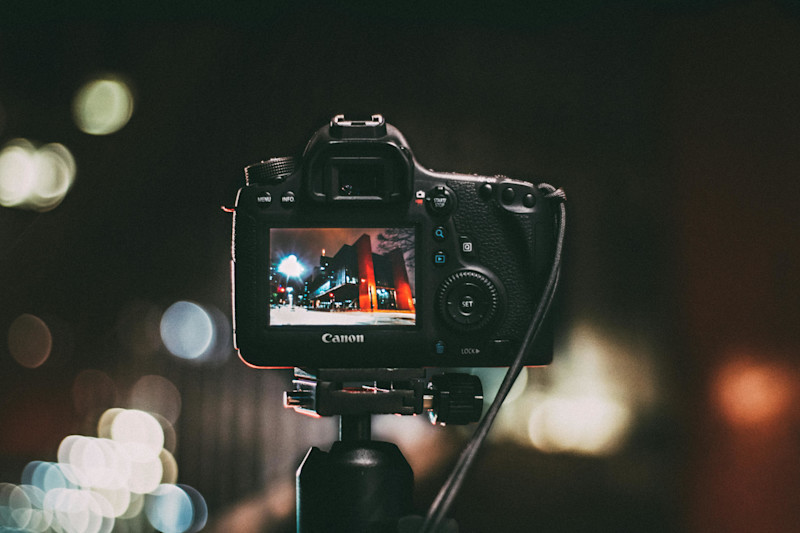
Some of the most brilliant minds the world has ever seen have created some of the most revolutionary technology and inventions, completely redefining how we look at the world
Throughout history, certain inventions have not only revolutionised the way we live but have also paved the way for countless other advancements. Over the annals of time, some of the most impactful inventions have fundamentally transformed our society. From the printing press to the aeroplane, the telephone, the wheel, and refrigeration, these innovations have reshaped communication, transportation, daily living, and so much more.
In this blog, we will take a closer look at how these game-changing inventions came to be and acknowledge the profound effects they’ve had on our world.
The Printing Press: Igniting the Spread of Knowledge
In the 15th century, an innovation enabled people to share vast amounts of knowledge more quickly and widely, pulling Europe out of the Middle Ages and accelerating human progress. German goldsmith Johannes Gutenberg is credited with inventing the mechanical movable type printing press around 1436. Although not the first to automate the book-printing process, Gutenberg’s adaptation, which used a screw-type wine press to apply even pressure on inked metal type, was key to unlocking the modern age.

This newfound ability to mass-produce books inexpensively completely changed the distribution of knowledge. Revolutionary ideas and priceless ancient wisdom were placed in the hands of every literate European, whose numbers doubled every century. This innovation also launched a global news network, powered the Renaissance and the Scientific Revolution, and provided a platform for fringe voices, ultimately leading to significant societal transformations.
The Aeroplane: Transforming Transportation and Connectivity
Aeroplanes are a true mark of modern transportation and have had an immeasurable impact on society in a myriad of different ways. Originally used for mail transportation, aeroplanes quickly evolved to carry passengers, making long-distance travel feasible and efficient. This remarkable creation also allowed for the rapid delivery of crops and goods, significantly improving trade and commerce across the globe.
The aeroplane’s importance extends beyond transportation as it has played a crucial role in wars, facilitated global trade, and connected people across vast distances. The aeroplane’s influence on the 20th century and beyond is profound, offering speed, safety, and comfort that other modes of transportation cannot match. Its role in shaping the modern economy, culture, and communication networks cannot be overstated and it is almost impossible to now think of a world where we couldn’t just jump onto Skyscanner and book a flight at the touch of a button.

The Telephone: Changing Communication and Business
Invented by Alexander Graham Bell, the Scottish-born American scientist and inventor, in 1876, the telephone transformed communication, business operations, and social interactions. Prior to its invention, communication was limited to face-to-face interactions, letters, or telegrams, which were often slow and unreliable. The telephone allowed for instant communication regardless of distance, profoundly impacting personal relationships and business dynamics.
It facilitated real-time communication with customers, suppliers, and partners, leading to increased efficiency and productivity. The telephone also played a significant role in emergency services, law enforcement, and the rapid dissemination of news, contributing to a more informed public, while its introduction of new etiquette and its impact on gender roles further underscore its cultural significance.
The Wheel: A Simple Invention with Profound Impacts
The invention of the wheel really got things rolling. An invention often taken for granted, this simple, yet incredibly useful innovation, has been crucial in transforming human society. Initially used by potters in the shaping (known as throwing) of clay into round ceramic ware, it later became a vital tool for transporting people and goods.
The wheel enabled the movement of heavy vehicles such as chariots, facilitating trade and warfare, and allowing mankind to work more efficiently and travel more quickly. Its role in creating better transportation methods and aiding in the development of other technologies, like the spinning wheel and water wheel, highlights its fundamental importance. The wheel has had a huge impact on so many facets of daily life, from transportation to agriculture and everything in between, making it one of the most important inventions in human history.
Refrigeration: Preserving Food and Transforming Food Supply Chains
The invention of refrigeration marked a significant triumph in modern civilisation, fundamentally changing how we store and consume food. For thousands of years, people used various methods to keep food cold, including drying and salting, but the modern approach to refrigeration, developed in the early 20th century, completely revamped this process.
Massachusetts merchant Frederic Tudor's realisation that ice itself was a commodity led to the widespread use of natural ice, but the development of the vapour compression refrigeration cycle by companies like General Electric perfected the technology. By 1927, modern refrigerators were keeping food cold efficiently, leading to the creation of the “cold chain” infrastructure. This allowed meat and produce to be kept cold from harvest to consumer, drastically changing North Americans' relationship with food and reimagining the food supply chain as a whole.

Batteries: Essential Powerhouses of Modern Life
Batteries are pivotal in our modern world, powering everything from portable gadgets like smartphones and laptops to electric vehicles (EVs) and renewable energy storage systems. They provide the necessary mobility and energy storage that supports a wide range of applications, including medical devices, emergency preparedness tools, and consumer electronics. The ability to store and use energy efficiently makes batteries crucial in reducing our reliance on fossil fuels and promoting sustainable practices.
Historically, one of the earliest known batteries is the Baghdad Battery, believed to date back to around 200 BCE. This ancient device, discovered near Baghdad, consists of a clay jar with a copper cylinder and an iron rod, and could produce an electric current when filled with an electrolyte like vinegar. The exact purpose of the Baghdad Battery is still debated, with theories ranging from electroplating and pain relief to religious rituals and simple experimentation.
Sunglasses: From Primitive Eye Protection to Fashion Icons
Sunglasses have evolved significantly since their earliest forms used by prehistoric Inuits to combat snow blindness with goggles made of bone or wood. The Chinese used rudimentary sunglasses to conceal judges’ emotions, while the first tinted glasses for vision correction emerged in the 18th century. James Ayscough's blue and green-tinted lenses in the 1700s were pivotal in developing modern sunglasses, and Sir David Brewster's work on polarised light laid the foundation for today’s polarised lenses.
Sunglasses gained mainstream popularity in the 20th century, thanks to Sam Foster’s affordable mass-market sunglasses in 1929 and the glamour associated with Hollywood stars. Edwin H. Land's polarising filter, developed in 1936, led to the creation of Ray-Ban sunglasses, which became iconic among pilots and outdoor enthusiasts. Today, sunglasses are not only essential for UV protection but also serve as fashion statements, influenced by pop culture figures and a variety of styles to suit different preferences.

Cameras: A Journey from Ancient Times to the Digital Age
The history of cameras dates back to the camera obscura, a device used by ancient Greeks and Chinese that projected inverted images through a small hole. This principle laid the groundwork for the first permanent photograph in 1826 by Joseph Nicéphore Niépce and subsequent advancements by Louis Daguerre and William Henry Fox Talbot in the 19th century. These early photographic techniques transitioned from laborious processes to more accessible roll film cameras introduced by George Eastman in 1888, making photography a popular hobby.
The mid-20th century saw the advent of instant photography with Edwin Land's Polaroid camera, and the digital revolution began in 1975 with Steven Sasson's digital camera prototype. Digital technology transformed photography, eliminating the need for film and enabling instant review and sharing of images. Today, smartphone cameras have democratised photography further, offering high-quality image capabilities and advanced features, while future innovations like AI, AR, and VR continue to push the boundaries of what cameras can achieve.

Light Bulbs: Illuminating Modern Life
The development of the light bulb changed how we illuminate our surroundings, transitioning from the use of oil lamps and candles to electric lighting. Thomas Edison’s 1879 invention of the practical incandescent light bulb marked a significant milestone, providing a long-lasting and reliable light source. Edison’s work, along with contributions from other inventors like Joseph Swan, paved the way for the widespread adoption of electric lighting in homes and businesses, fundamentally changing daily life and industrial productivity.
Modern advancements have led to the creation of energy-efficient lighting solutions, such as compact fluorescent lamps (CFLs) and light-emitting diodes (LEDs). These technologies offer longer lifespans and reduced energy consumption compared to traditional incandescent bulbs. LEDs, in particular, have become the standard for a variety of applications, from residential lighting to streetlights and electronic displays, due to their durability, efficiency, and versatility in design and colour.
The evolution of so many everyday objects clearly highlights the profound impact of innovation on our daily lives. Each advancement reflects humanity’s never-ending search for improvement and convenience. These developments not only enhance our quality of life but also underscore the importance of continuous innovation in driving societal progress. As technology continues to advance, we can look forward to even more transformative changes that will shape our future in ways we can only begin to imagine.
For more related updates and to Katch us covering similar topics, watch this space!
Katch our game-changing PR and Communications, Social Media, Branding and Design, Brand Consultancy, Digital Marketing, and Global Communications services to help your brand make noise. Get in touch with our 360-Marketing agency in Dubai, Qatar, Saudi Arabia, and London, and let’s get the conversation started!
